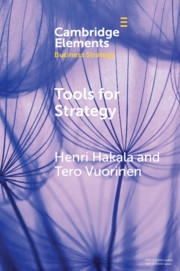Element contents
Tools for Strategy
Published online by Cambridge University Press: 28 August 2020
Summary
Information
- Type
- Element
- Information
- Series: Elements in Business StrategyOnline ISBN: 9781108883757Publisher: Cambridge University PressPrint publication: 24 September 2020
References
Accessibility standard: Unknown
Why this information is here
This section outlines the accessibility features of this content - including support for screen readers, full keyboard navigation and high-contrast display options. This may not be relevant for you.Accessibility Information
- 19
- Cited by
